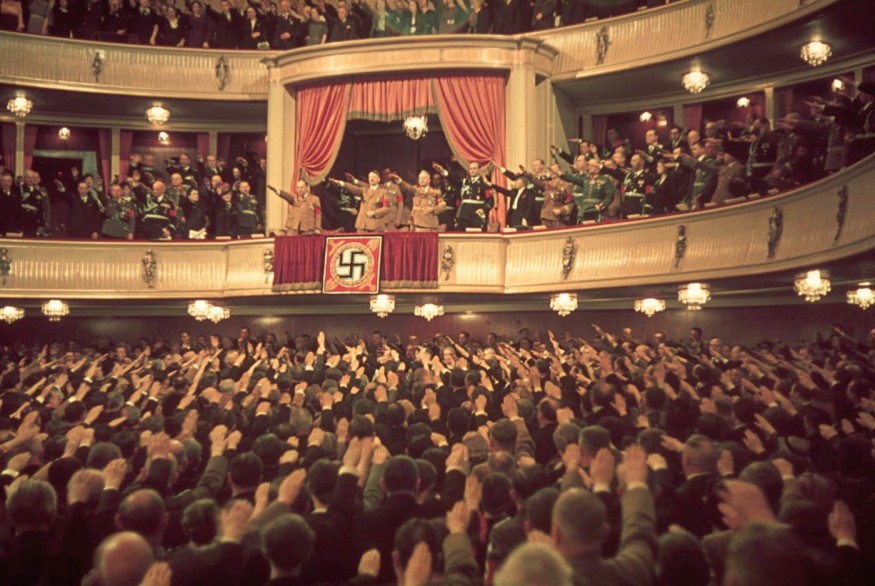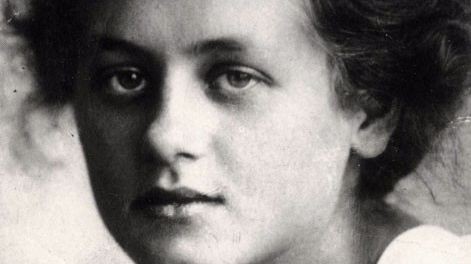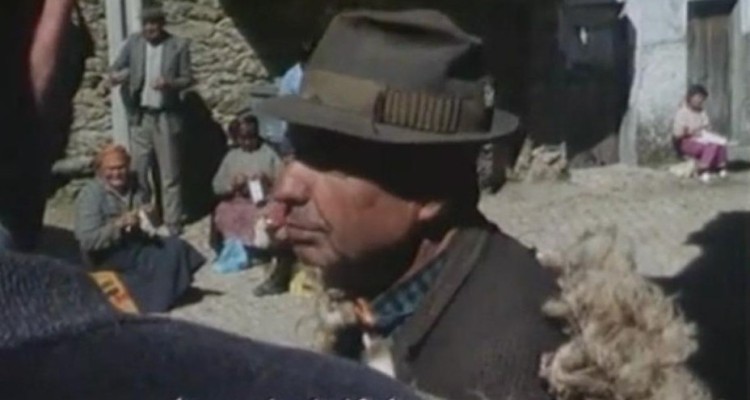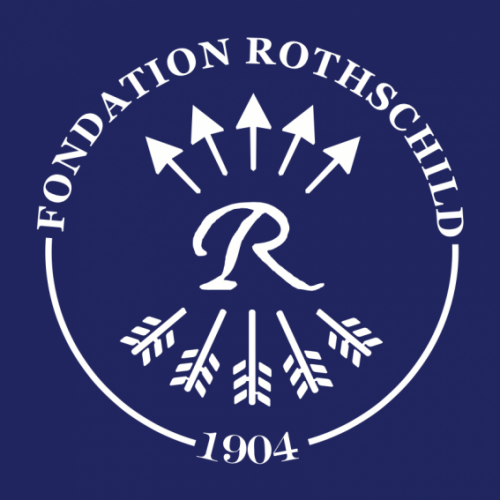Do today’s music lovers and discophiles feel embarrassed when they listen to recordings of the great performers who played, between 1933 and 1945, without any qualms, for the Nazi leaders? This is the case of Philippe Olivier, a music historian and opera specialist – particularly Wagner – for whom this question is not insignificant and who wonders about his own relationship with this musical heritage.

I am a music historian. I was born in 1952. The names of exceptional performers such as the conductor Wilhelm Furtwängler (1886-1954) or the pianist Wilhelm Kempff (1895-1991) are not only synonymous for me with artistic wonder. Not forgetting, among others, Elisabeth Schwarzkopf (1915-2006), dubbed “the Nazi diva” by the New York Times, they remain closely linked to a terrifying past. When I listen to them, I hear not only the excellence of their performances, but also the historical and political context in which they took place. There are other music lovers who do not share my divide. They fall into two broad categories. Firstly, there are listeners who claim to be so neutral that they say they are in favour of a total separation between art and politics. There are also music lovers who are tormented by the history of Europe in the 20th century. They refuse – for example – to enjoy Beethoven’s symphonies conducted by Dr. Furtwängler so as not to have to take into account the context in which Germany found itself under Hitler. I would like to return here, in a personal way, to my own relationship as a listener to this musical heritage, where artistic genius is intermingled with the most sordid compromises.
Furtwängler, Kempf, Schwarzkopf: three typical cases
Wilhelm Furtwängler is a typical case of this tension. A pure product of the bourgeois cultural establishment in a position of power under the reign of Wilhelm II, he was quickly considered as the emblem par excellence of German musical art. He is still regarded as one of the greatest conductors of all time. He presided simultaneously over the Berlin Philharmonic Orchestra and the Leipzig Gewandhaus, considered taking over the Vienna Philharmonic Orchestra and triumphed at the Bayreuth Festival, the opera showcase of the Hitler regime. Furtwängler, a particularly vain man, was almost pulverized by Goebbels because of his consideration for “degenerate” composers like Arnold Schönberg (1874-1951) and Paul Hindemith (1895-1963). But he removed them from his repertoire and kept a low profile. Such an attitude was – for him – all the more necessary as he claimed that he could not live outside Germany. In 1934, having become an icon of the Third Reich, Furtwängler fired his secretary and artistic delegate, the famous Fräulein Dr. Berta Geismar (1892-1949), because she was Jewish. Yet this brilliant and ambitious woman testified in Furtwängler’s defence during the denazification trials of 1947.
Having played more than once under Furtwängler’s baton, the pianist Wilhelm Kempff – considered as having recorded one of the great reference versions of the complete Beethoven sonatas – was the fruit of a Lutheran education devoted to the defence of Prussian military “values” and of the greatness – experienced as universal – of German music. During the First World War, he played near the front lines for the soldiers of the imperial army. After the sinister events of late January 1933, Kempff became an ambassador-pianist for the new government. He went on propaganda tours and performed in the countries under Nazi occupation. When peace returned, Kempff triumphed in France from the 1950s to the 1990s, disguising himself as a lamb for the reconciliation of our country with its Germanic neighbour. This did not prevent him, at the Bayreuth Summer Festival after the war, from finding personalities and artists alike continuing to use the coded phrase “unser seliger Adolf, i.e. “our blessed Adolf”…
Third typical case, after Furtwängler and Kempf: the singer Elisabeth Schwarzkopf, who joined the National Socialist Party for career reasons and became its cardholder n° 7. 548. 960. Under the patronage of Richard Strauss, himself president of the Reich Chamber of Music, she gave concerts for members of SS divisions stationed in various military fields of operation and – according to a persistent rumour that has not yet been verified – sang for the officers of extermination camps. As Schwarzkopf became a singing star comparable to Callas in the 1960s, there was a general silence about her unabashed support for Hitler’s theories. Repression, denial of the past, and a residual anti-Semitism were probably at work here and there. One of the only developed countries where the Schwarzkopf never happened was Israel. There, it was well known what to expect from her past. She had become a renowned singing pedagogue and her teaching technique was authoritarian to say the least. On more than one occasion she told her highly talented pupils that they should marry and become mothers instead of dreaming of a career as a singer. She was never afraid of psychological terrorism.
In 1987, I was confronted with the unabated violence of Elisabeth Schwarzkopf when I visited her in her villa in Zumikon, near Zurich. At the age of seventy-two, she made remarks that literally stunned me. In her eyes it was impossible for her Spanish colleague Teresa Berganza (1933-2022) to excel in Mozart because she did not come from the German-speaking world. He also detested the American singer Teresa Stich-Randall (1927-2007), who had committed the ‘sacrilege’ of performing works by German and Austrian composers. Elisabeth Schwarzkopf was careful not to mention the few African-American singers who had performed in Berlin or Salzburg before Hitler came to power. For the legendary soprano, the post-war free world was in danger of being destroyed because democratic values were widespread and because diversity was a major danger in her eyes. I came out of that interview in a state of obvious shock. I had been confronted with a cynical, power-hungry woman of rare malice, an image passed on by colleagues to whom she had inflicted a thousand ills while the Third Reich imagined it could last a thousand years. I expected to meet a world figure. I saw an old lady formulating opinions that attested to her ineradicable membership in a fascist Weltanschauung. When you meet someone like that, there is a naïve question: how can you sing An Sylva or Gretchen am Spinnrade [Daisy at the Spinning Wheel], like all of Schubert’s lieder, with the required gentleness and subtlety and yet harbour such political resentment?
Bayreuth Über Alles
In January 2022, the City of Berlin announced that a commission of historians would advise the mayor of Berlin to change the names of about 100 streets. The names referred to personalities known for their anti-Semitism or support of Nazi theories. Richard Wagner and Richard Strauss were among them. Richard Strauss, who was honoured under the Third Reich, composed the anthem for the 1936 Olympic Games. When he was forced to take in refugees from Allied bombing raids in his sumptuous Upper Bavarian villa, he complained bitterly that he was confronted with people he considered to be too closely associated with the working classes. But Strauss never boasted that his daughter-in-law was Jewish. As Simon Ghraichy ( 1985), the French classical piano rock star whom I asked for his opinion on these matters, puts it, ‘powerful taboos are still at work. We don’t like to talk much about composers and performers who have associated their image with the ravages of dictatorships. But instead of attacking them, we should take into account two basic psychological facts. On the one hand, many artists are ready to make any compromise in order to survive as artists. On the other hand, the fragility of their status will have created the strangest situations. This is the way human beings are.”[1]
I, for one, am not in the least affected by these topics. After decades of studying such topics, I believe that the German people have no right to forgiveness for the horrors committed before and during the Second World War. To claim that they were unaware of the Shoah is a revisionist sham. There is still a small proportion – perhaps 1% – of the Bayreuth Festival audience who share Hitler’s obsessions. As Klaus Mann (1906-1948) wrote of his countrymen after the war: “Since they can no longer show off their […] tanks, they resort to Bach and Beethoven.” The truth about Bayreuth under Hitler? Its synagogue was not burnt down on Kristallnacht in 1938, because it adjoined the Baroque Margrave Theatre. But the Jews of Bayreuth were deported from 1942. The city of Franconia declared itself judenfrei. The Festspielhaus management had previously dismissed Jewish singers, dancers and instrumentalists from the venue. Many of them were murdered in Auschwitz — where, incidentally, deportee orchestras played. The camp officers enjoyed listening to one of their captives, the Greek Estrongo Nachama (1918-2000), the future hazan of the West and East Berlin communities.
When it comes to the recordings made between 1933 and 1944 in Bayreuth, it is of course impossible – when listening to them – to ignore the situation at the time. One can gloat when listening to Dr Wilhelm Furtwängler, the emblem of Hitler’s cowardice, at the podium of the Nuremberg Master Singers given at the 1943 festival. But one has to ask about the circumstances of the performance of this work. The Master Singers was the only work given in Bayreuth that year, due to the total war effort. Its sixteen performances were intended exclusively for ‘personal guests of the Führer’, namely soldiers, nurses, armaments workers and ‘deserving‘ citizens. The listener of the recording conducted by Furtwängler may not be aware of this, but he should know it and not forget it while listening to it. He should imagine a hall lined with green-grey uniforms while swastikas floated everywhere around the building and Hitler Youths helped with the welcoming service. After 1945, a certain proportion of the audience declared that they had been definitively disgusted by Wagner, so much so that the regimentation organised at the festival provoked a nausea that was kept secret at the time.
Toscanini, for his part, deserted Bayreuth. The legendary Italian conductor, who had been announced for the 1933 festival, was replaced by Richard Strauss at the helm of Parsifal. The Italian had fallen out with the descendants of Richard Wagner because of their complacent shift towards Hitler’s theses. Toscanini was one of the few world-class classical music stars to take up the cause of persecuted Jews. He travelled to Mandatory Palestine where he conducted the inaugural concert of the future Israel Philharmonic Orchestra in December 1936. After the Second World War, the plan to resurrect the Bayreuth Festival with the help of a management team consisting of Arturo Toscanini and Thomas Mann failed. Despite the occupation of Bavaria by the US Army, they did not want to promote two veterans of the fight against Nazism…
Nazi Rewriting of German Music History
Life under Nazism was flooded with music, but when radio broadcasts of concerts, the foundation of many future records, took place, the works of Mahler, Schönberg, Offenbach, Mendelssohn-Bartholdy and many others were excluded. These Jewish composers or composers of Jewish origin were forbidden to perform, publish or broadcast. A school of Nazi or NSDAP-supported ‘musicologists’ emerged, shamelessly asserting that Mendelssohn – grandson of Moses and the most problematic case to be re-evaluated by the Nazis in view of his important place in the constellation of German Romantic music – was to be regarded as an alien figure to German culture. Yet in 1829 he had resurrected Bach’s St. Matthew Passion, the absolute master whose zealous standard-bearers Hitler’s thinkers would later make their own. “To think that it took a little Jew like me to remind them of the greatness of their music”, Felix Mendelssohn-Bartholdy might have replied – in anticipation – when he uttered this perhaps apocryphal phrase.
Between 1933 and 1945, German scrutiny was also concerned with the content of many scores. Take Beethoven’s Violin Concerto in D major, Op. 61, for example. The cadenzas written by the Jewish virtuoso Fritz Kreisler (1875-1962) were removed and replaced by those of Ottmar Gerster (1897-1969), a composer protected by Hitler. See Philippe Olivier: La vie musicale en République Démocratique Allemande (1949-1990), Droz, Geneva, 2022, pp. 94-95. </footnote>. Even today, the cadenzas signed Gerster appear on several recent recordings of Beethoven’s Op. 61. The vast majority of discophiles revel in them. They are unaware of the context in which Gerster was prompted to write these cadenzas, namely on the orders of the authorities in Nazi Germany. I, for one, cannot forget that. Nor can I forget that the German translation of the libretto of Mozart’s operas – by the great conductor Hermann Levi (1839-1900) – was replaced by another translation because of the signatory’s Judaism. All references to characters or situations found throughout the Torah in Handel’s famous oratorios were also removed. Thus, the title of Judas Macabaeus was changed to A Hero of Our People.
This eradication does not only concern classical music, but also jazz. Last year, as is often the case in the streets of Berlin, I discovered books that were freely available to the curious. I took a look at them, due to a professional deformation. I take two books out of a box. The fishing is good. One of the two books idealises life in the Sudetenland, the subject of the Munich Agreement in 1938. It also depicts the members of the Jazzband Saxonia, when jazz playing was banned by Nazism and its records were destroyed in public by zealous fascists[2]
A posterity that, against a background of oblivion, is not denied.
I mentioned the emblematic cases of Furtwängler, Kempf and Schwartzkopf. They are emblematic, and not only of the compromises of German musicians. In France, we know of the problematic career of Alfred Cortot (1877-1962) – a French pianist who trained dozens of performers during his career as a great teacher – who advised Marshal Pétain in order to eliminate the “undesirable elements of the musical profession”, who performed in front of Wehrmacht officers, and who travelled to Nazi Germany in the middle of the war in order to give concerts there. Alfred Cortot played here and there, in June and July 1942, while the Vel’ d’Hiv’ round-up was being prepared. The man who had founded the École Normale de Musique in 1919 so that French performers could escape the influence of German higher musical education was now a regular guest of Otto Abetz (1903-1958), ambassador of the Third Reich to the Vichy government. A few years after the end of the Second World War, Cortot was still noted for his lack of discernment. In 1947, he was astonished to be challenged and booed at the Théâtre des Champs-Élysées by listeners who reproached him for his links with Nazi Germany. A fight ensued and the police intervened.
I like to remember that, unlike Cortot, some non-Jewish pedagogues did not want to stop teaching Jewish pupils in the midst of the turmoil. Jules Boucherit (1877-1962), a professor at the Paris Conservatoire, hid several future violin virtuosos in a villa in Seine-et-Marne. Ivry Gitlis (1922-2020) was among them. Boucherit, later recognised as Righteous Among the Nations, was never afraid to give lessons, an activity that was becoming increasingly risky due to the pressure exerted by the occupying authorities, the adoption of new anti-Jewish measures by the Vichy government and, above all, the intensification of police raids. Also, at the same time, the great pianist Clara Haskil (1895-1960) found refuge in the vicinity of Marseille, in the home of Countess Lily Pastré (1891-1974). If Haskil had not been saved, she would not have been able to record. The same was true of Lazare Lévy (1882-1964), the teacher of the Liszt virtuoso France Clidat (1932-2012), who was forced to hide near Montpellier. Philippe, the son of Lazare Lévy, was a hero of the Resistance. Tortured by Alois Brunner (1912-2001), he died in 1944 in Auschwitz.
Cortot’s German colleagues, the pianists Walter Gieseking (1895-1956) and Wilhelm Backhaus (1884-1969), were also opportunistic. The former enjoyed Hitler’s company. In 1938 he was appointed Reich Senator for Culture. Backhaus performed in occupied France during the tours of the Berlin Philharmonic Orchestra, although the concert scheduled for Marseille was disrupted by protests from the audience. Gieseking and Backhaus remained brilliant pianists, references and celebrities, as did Kempf. After the war, they had to forget their past attitude, but the reflexes could remain… In the mid-1960s, Kempf publicly reproached one of his French students for marrying a Jew. This attitude did not prevent him, at the same time, from being received into the Ordre des Arts et Lettres by André Malraux at the end of one of his Salle Pleyel recitals. On the other hand, the pianist Pierre Reach (born 1948) learned from the Romanian pedagogue Ludmila Popisteanu that “Kempff had demanded in Bucharest, in the Athenaeum hall, where he had come to play Beethoven sonatas in 1942, that the Jews leave the hall in order to be able to begin his concert”[3]. Their eventual presence would have tainted – according to Kempff and his friends – the levitation of the audience. The mention of such an episode later infuriated the great conductor Otto Klemperer (1885-1971), who was expelled from Nazi Germany in the spring of 1933. Klemperer was a left-wing Jew.
However ideologically involved they may have been, Gieseking, Backhaus and Kempff have nevertheless remained in the history of interpretation as artists with a very high artistic power. They are therefore comparable to Furtwängler and Elisabeth Schwarzkopf. However, they did not reach the peak of iniquity and Nazi commitment of Elly Ney (1882-1968), nicknamed “the pianist grandmother of the Third Reich”.
Elly Ney, this Beethoven specialist – whose recordings still exist – never frequented hotels where Jews were staying. She refused to perform in the Slovenian town of Maribor because, in the 16th century, several Catholic families there “asked to convert to Judaism. Holder of the NSDAP’s Gold Pin of Honour, Elly Ney became very wealthy during the Third Reich. Germany was occupied by the Allies, but she continued to give concerts until the twilight of her life. Her listeners were unaware that the SS tortured opponents, homosexuals and Jews while her fingers spun on ivory. They preferred to see Elly Ney as the vestal of the German keyboard art of the time. In any case, discographic posterity has not retained her name. She has not received unanimous recognition. There are two reasons for this. On the one hand, Elly Ney’s publicity was closely confused with Nazi propaganda. On the other hand, his interpretations of Beethoven are nowadays commented on in a way that is not at all serene. They sound very aggressive, full of almost belligerent fortissimos, and turn Viennese sonorous language into a language of violence. The example of these performances would suggest that there was a Nazi “colour” in the performance of the works left by the great German composers.
The expert Günter Haußwald (1908-1974) celebrated at the time an art “preserved from bad influences”[4]. Opposite the ominous figure of an Elly Ney will be placed the unfortunate Karlrobert Kreiten (1916-1943), a pupil of Claudio Arrau (1903-1991). A promising artist, Kreiten was an opponent of Nazism. He was denounced to the Gestapo by a singer, arrested, sentenced to death and executed before he was thirty. If Kreiten is almost completely forgotten in Germany today, Wilhelm Kempff’s compromises with the Nazi regime cannot be overexposed at public events there.
Do we have the right – that is how I put it, in terms of having the right – to feast on virtuosos who have served the cause of so-called German “superiority” and its genocidal agenda without any ulterior motives? What are we to think of the recordings of the Berlin Philharmonic Orchestra, whose violinists, violists and cellists played instruments looted from their Jewish owners, instruments handed over during a ceremony in which these musicians took an oath to play them in the glory of “Aryan” music? Who remembers that Bechstein pianos, used for many of the recordings under Nazism, were produced by a factory whose majority shareholder, Helene Bechstein (1876-1951), regarded Hitler as her adopted son?[5] A source of pleasure and emotion, the record is both a documentary and a restrictive tool. It is restrictive because it obscures part of the reality, known only to the actors as well as to witnesses of various events and experts.
I remember the icy atmosphere that descended on the audience at the Berlin Academy of the Arts when, in December 2008, I recalled the devout regard in which Kempff was held by the Nazi hierarchs. The debate, of which I was one of the speakers, was held in the context of a large exhibition devoted to this pianist, who had been transformed into an immaculate figure. One of Wilhelm Kempff’s daughters was in the audience. She claimed that her father did not have the post-mortem fame he deserved – in her opinion, of course. We are falling into cesspools here.
It is, in my opinion, impossible to revel – in all ignorance and innocence – in the interpretation of works which, however admirable, were born in an abject context. The same context was in complete contradiction with the expressive, humanistic content of the works in question. In a country such as France, where music is seen as a mode of expression for mere entertainment, the level of music history is low. The information in the entries published – in our language in particular – by Wikipedia is limited when it comes to the relations of eminent musicians with Nazism. It does not mention anything that could tarnish their image post mortem. The German version of Wikipedia, on the other hand, is generally very informative. In order to access most of the information contained in this text, it is therefore necessary to have a good command of German at university level, a feature that distinguishes a tiny minority of readers. As a pianist who teaches opera singers their roles, Thomas Tacquet-Fabre observes that ‘for today’s performers, one of the problems is ignorance. When I started listening to anthologies of Wilhelm Kempff or Elisabeth Schwarzkopf, I knew nothing about their relationship with the Nazi regime. One needs information about the past actions of these artists. You can’t find any when you listen to their playlists. Our trainers, at the Paris Conservatory or elsewhere, are not historians. Their way of thinking is musical, technical, not historical. It is necessary to take personal initiatives. I made a number of discoveries by reading history books, including those of the conductor Amaury du Closel”[6]. Born in 1956, Amaury du Closel is a pioneer in this field. He travels throughout Europe, with his ensemble Voix étouffées, to conduct works by composers who were victims of Hitlerism.
In this way, Du Closel compensated for the weaknesses of the system of higher education in music. The Nazi period is never mentioned when studying the works of Paul Hindemith or Kurt Weill (1900-1950), even though they were victims of the dictates of Goebbels and his servants. It is hardly explained why recordings of Fritzi Massari (1882-1969), queen of operetta in Berlin and Vienna, have become rare to find. A Jewish convert to Protestantism, she managed to flee across the Atlantic in 1939. Chamber music teachers do not mention Anita Lasker-Wallfisch, a cellist who co-founded the English Chamber Orchestra. She was a member of the orchestra of women prisoners in Auschwitz. Her son Raphael, also a cellist, has a brilliant international solo career.
Epilogue: Hans Schnoor, music historian under Nazism and after the war
The second abandoned book, which I picked up in early 2022 in Berlin’s Weißensee district, is the work of Hans Schnoor (1893-1976). It is a substantial introductory guide – published in 1955 – to scores given in opera, operetta and concert halls[7]. A doctor of musicology, the author taught at the Dresden Conservatory. He joined the National Socialist Party nine months before Hitler came to power and, like others, exerted a negative influence on the musical taste of the German public through his professions of faith. One of his books, which sold 120,000 copies, contains the following statement: “The new spiritual Germany includes […] the people and the Führer, the fatherland, blood and soil [Blut und Boden], race, myth, the history of heroes. […] These thoughts carry with them the old metaphysical nostalgia of the artistic idealization of its highest values of looking at the world[8].” A militant anti-Semite, Schnoor claimed that the European musical life of his time was controlled by the Jews.
During the global armed conflict, Schnoor supported Nazi military operations by writing – in 1943 and 1944 – in the fortnightly Musik im Krieg [Music in War]. Written by specialists then in the army, the publication was a catalogue of monstrous opinions. However, once peace was restored, its authors were not bothered. They became authorities in the era of the German economic miracle. The incorrigible Schnoor – who shows a form of continuity between what was written under Nazism and after the war – continued to write texts with very bad taste. An article on Giacomo Meyerbeer (1791-1864) indicates that – according to Schnoor – this composer had a “managerial nature: art as business and business as art”[9]. In 1956, a major scandal broke out in the German trade journals. It was sparked by Schnoor, attacking both – in an article – the conductor Hermann Scherchen (1891-1966) and the composer Arnold Schönberg. Schnoor accused Scherchen of having played Beethoven’s Egmont Overture alongside Schönberg’s monodrama Un Survivant de Varsovie at a concert. He called the score “a disgusting work that must sound like an insult to every German worth his salt”[10]. Dating from 1947, the monodrama tells the story of persecution in a Nazi concentration camp by a survivor of the Warsaw ghetto. It ends with the Chema, Israel. Although this masterpiece was written after the fall of the Nazi regime, the performers in its service never performed it in the immediate post-war period. It was, however, valued and recorded by Pierre Boulez (1925-2016). To return to Schnoor, he had also – in his 1955 guide – commented on Schönberg’s Moses and Aaron. In it he suggested, with complete intellectual dishonesty, that the composer had not completed the work because it would have been too large in scale for his means[11].
When peace returned, Schnoor and his friends blamed the few emigrants from between 1933 and 1939 who returned to Germany after 1945. Otto Klemperer was one of them. Schnoor accused him of performing across the Rhine again and wished for violent reprisals: “There will be an uprising – not an uprising of the masses, but an uprising of the best of us[12].” Such words indicate that the dross of Nazism was still at work. Since the record is one of the forms of memory, any modern music lover cannot ignore such a subject. The sound recording belongs to history, not only to the history of musical interpretation.
Philippe Olivier
Philippe Olivier is a specialist in German musical life between 1933 and 1945, and under the German Democratic Republic. He has published some thirty books, both in France and abroad. He has been invited to speak at the Academy of Arts and the State Opera in Berlin, at the Bayreuth Festival, at the Universities of Geneva, Ljubljana, London, Tel Aviv, Vienna and Vilnius.
Notes
| 1 | Telephone interview with Simon Ghraichy, 4 February 2022. |
| 2 | From the Sudetenland also came the Jewish pianist Rudolf Serkin (1903-1991). Now a myth, Serkin was saved from probable death by emigration to the United States. He cannot, of course, be classed as a pianist who deliberately submitted to Hitler’s rule. Yet he was – amazingly! – courted in 1933 by Hermann Göring himself. |
| 3 | Communication from Pierre Reach – by e-mail – to the author, dated 4 November 2021. A disciple of Yvonne Lefébure (1898-1986), Pierre Reach is a French virtuoso from a Central European family that counted Gustav Mahler among its members. Pierre Reach made a transcendent recording of Johann Sebastian Bach’s Goldberg Variations. He also excels in Beethoven, whose complete piano sonatas he is preparing. |
| 4 | Günter Haußwald: Die deutsche Oper, Hermann Schaffstein Verlag, Cologne, 1941, p. 59. |
| 5 | Helene Bechstein gave Hitler a Mercedes convertible; he gave his admirer the autograph manuscript of Mein Kampf as a gift. |
| 6 | Telephone interview with Thomas Tacquet-Fabre, 3 February 2022. |
| 7 | Hans Schnoor: Oper, Operette, Konzert- Ein praktisches Nachschlagbuch für Theater- und Konzertbesucher, für Rundfunkhörer, Fernsehteilnehmer und Schallplattenfreunde, Bertelsmann, Gütersloh, 1955. |
| 8 | Hans Schnoor: Oratorien und weltliche Chorwerke, Breitkopf & Härtel, Leipzig, 1939. |
| 9 | Hans Schnoor: Oper, Operette, Konzert- Ein praktisches Nachschlagbuch für Theater- und Konzertbesucher, für Rundfunkhörer, Fernsehteilnehmer und Schallplattenfreunde, Bertelsmann, Gütersloh, 1955, pp. 302-303. |
| 10 | Such statements were published by the Westfallenblatt, a regional daily newspaper published since 1946 in Westphalia. It was controlled by Carl-Wilhelm Busse (1914-2001), apparently a close associate of Schnoor. |
| 11 | Hans Schnoor: op. cit. p. 392. |
| 12 | Hans Schnoor: Wir und der Funk [We and the Radio], in Westfalenblatt, 29 October 1955. |









